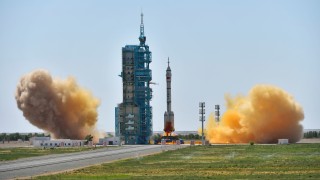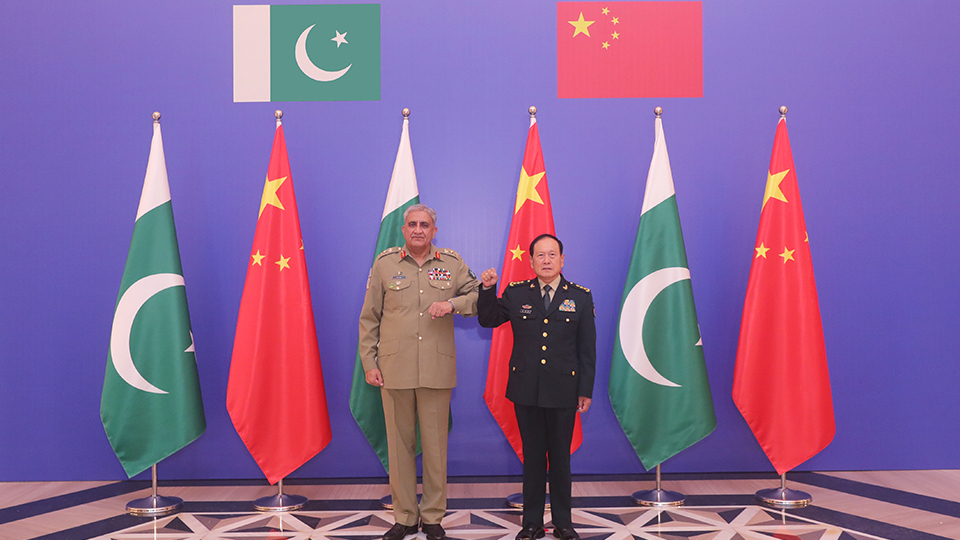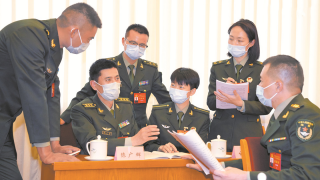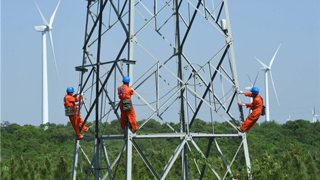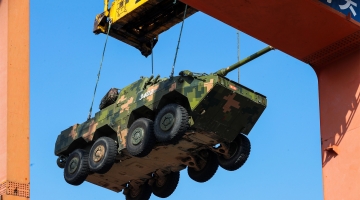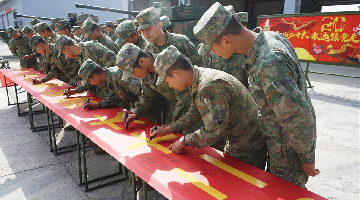By Gao Qiao
NATO’s annual nuclear deterrence exercise code-named Steadfast Noon is held in the airspace over northwest Europe from October 17 to 30, involving 60 military aircraft from 14 NATO countries. NATO’s spokesperson said in a statement that "this exercise helps ensure that the Alliance’s nuclear deterrent remains safe, secure and effective."
NATO’s insistence on holding the exercise in the middle of the Russia-Ukraine tension has caused the international community to worry about a possible nuclear confrontation between the organization and Russia. Experts said the aggressive message to Russia may escalate the risk of a global nuclear war.
NATO’s toughened stance on Russia
According to NATO’s statement, the main part of the Steadfast Noon exercise will be held over Britain’s North Sea and Belgium, the participating air force planes won’t fly to within 1,000km from Russian territory, and the exercising troops won’t use combat weapons. It also stressed that the exercise is an annual routine arrangement not targeting any third country. American website The Drive reported that the US, the UK and France are the only NATO-member states having organic nuclear weapons capabilities. According to the organization’s nuclear sharing principle, Belgium, Germany, Italy and the Netherlands’ B61 nuclear bombs can be carried by each other’s tactical jet aircraft and also by other NATO members’ tactical planes including F-15E, F-35 and F-16, which have been the star in Steadfast Noon of previous years. It’s worth noting that this year is the first time that B-52 strategic bombers from the Minot Air Force Base in North Dakota participated in the exercise, a move whose symbolic meaning of deterrence cannot be neglected.
According to Cui Hongjian, director of the Department for European Studies, China Institute of International Studies, a fundamental reason why NATO insisted on carrying out the nuclear exercise as planned regardless of the rising risk of nuclear warfare is that under the current circumstances, it believes that canceling the annual routine exercise would make it look weak to Russia, and it doesn’t want that. In the meantime, the US can also leverage the exercise to strike a tough stance on Russia and demonstrate its ability to protect Europe.
A divided Europe
The nuclear deterrence exercise is opposed by some European people too. Belgium’s RTBF TV station reported that the Belgian Coalition Against Nuclear Weapons asked the authorities to call off the exercise given the international tension, and released a statement saying that it is irresponsible to hold such exercises in times of high nuclear tension with Russia. The association also held that in case of a nuclear conflict, such exercises in Belgium would make the country a potential target, especially when the headquarters of NATO and main bodies of the EU are all based in Brussels.
Foreign media reported that French President Macron said in public on October 12 that Paris would not respond with nuclear weapons if Russia deployed nukes against Ukraine. “Although NATO’s European members appear cooperative to the US during the exercise, they are not totally on the same page about the exercise itself.” Zhao Ke, associate professor of Institute of International Strategic Studies of the Party School of the Central Committee of CPC, analyzed that owing to factors such as geopolitics, history, and national interests, Central and Eastern European countries are more willing to be tied up with the US and send a tougher message to Russia through the nuclear deterrence exercise. In comparison, traditional Western European countries want to contain the exercise as an annual routine without giving the impression of escalating a conflict. After all, the Russia-Ukraine conflict broke out at Europe’s doorstep and exposed the continent to immense shock waves, so easing the conflict is more in line with its strategic interests now.
Escalated nuclear risks worldwide
The international community is generally concerned that if neither NATO nor Russia wants to take a step back on nuclear deterrence, the risk of a global nuclear war may spiral up.
At the recent tenth review conference of the Parties to the Treaty on the Non-Proliferation of Nuclear Weapons (NPT), UN Secretary-General António Guterres warned that we are facing “a time of nuclear danger not seen since the height of the Cold War.”
According to a report by The Drive, Russia may, as usual, hold its Grom annual nuclear exercise in late October and test-fire ballistic missiles and try out other strategic nuclear capabilities. That NATO and Russia will have their nuclear exercises almost at the same time indicates a moment of extreme turmoil. Cui Hongjian also noted the falling level of mutual trust between the two sides since the Russia-Ukraine conflict began. Against such a backdrop, the heightened nuclear deterrence on both sides may bring their relations back to the Cold War period, when the US and the Soviet were in a kind of “balance of terror”. Next, NATO, on the ground of preventing nuclear threats from Russia, may first reinforce its anti-missile development in the framework of an overall air defense system for a better capability of nuclear defense against Moscow, and then go on to step up nuclear deployments in Europe.
As long as the US-Russia negotiations on strategic stability remain stalled, there is the possibility that the two countries may break some of the nuclear rules they reached earlier, including the limitation on the number of nuclear warheads, location of nuclear weapon deployment, and not holding nuclear exercises close to the other’s territory. If these rules no longer hold, regional security will be subject to extremely adverse effects.
Editor's note: Originally published on haiwainet.cn, this article is translated from Chinese into English and edited by the China Military Online. The information and opinions in this article do not necessarily reflect the views of eng.chinamil.com.cn.

